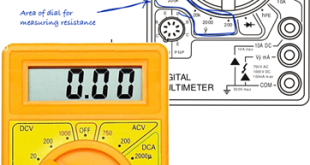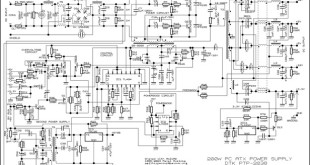Tonight – January 2, 2018 – we reach Earth’s closest point to the sun for this entire year at 11:35 p.m. CST (central U.S.). It’ll be the morning of January 3 for Europe and Africa … later in the day January 3 for the rest of the world (January 3 at 5:35 UTC; translate to your time zone). Astronomers call this special point in our orbit perihelion, from the Greek roots peri meaning near and helios meaning sun.
On January 3, 2018, Earth at its closest point swings to within 91,401,983 miles (147,097,233 km) of the sun. That’s in contrast to six months from now, when the Earth reaches aphelion – its most distant point – on July 6, 2018. Then we’ll be 94,507,803 miles (152,095,566 km) from the sun.
In other words, Earth is about 3 million miles (5 million km) closer to the sun in early January than it is in early July. That’s always the case. Earth is closest to the sun every year in early January, when it’s winter for the Northern Hemisphere.
We’re farthest away from the sun in early July, during our Northern Hemisphere summer.
So you see there’s not a huge distance difference between perihelion and aphelion. Earth’s orbit is very nearly circular. Thus it’s not our distance from the sun – but instead the tilt of our world’s axis – that creates winter and summer on Earth.
In winter, your part of Earth is tilted away from the sun. In summer, your part of Earth is tilted toward the sun. The day of maximum tilt toward or away from the sun is the December or June solstice.
Though not responsible for the seasons, Earth’s closest and farthest points to the sun do affect seasonal lengths. When the Earth comes closest to the sun for the year, as around now, our world is moving fastest in orbit around the sun. Earth is rushing along now at almost 19 miles per second (30.3 km/sec) – moving about a kilometer per second faster than when Earth is farthest from the sun in early July. Thus the Northern Hemisphere winter and – simultaneously – Southern Hemisphere summer are the shortest seasons as Earth rushes from the solstice in December to the equinox in March.
In the Northern Hemisphere, the summer season (June solstice to September equinox) lasts nearly 5 days longer than our winter season. And, of course, the corresponding seasons in the Southern Hemisphere are opposite. Southern Hemisphere winter is nearly 5 days longer than Southern Hemisphere summer.
It’s all due to the shape of Earth’s orbit. The shape is an , like a circle someone sat down on and squashed. The elliptical shape of Earth’s orbit causes the variation in the length of the seasons – and brings us closest to the sun in January.
Image Credit: Dna-webmaster
Bottom line: In 2018, Earth’s closest point to the sun – called its perihelion – comes on January 3 at 5:35 Universal Time (on January 2 at 11:35 p.m. CST).
Bruce McClure has served as lead writer for EarthSky’s popular Tonight pages since 2004. He’s a sundial aficionado, whose love for the heavens has taken him to Lake Titicaca in Bolivia and sailing in the North Atlantic, where he earned his celestial navigation certificate through the School of Ocean Sailing and Navigation. He also writes and hosts public astronomy programs and planetarium programs in and around his home in upstate New York.








